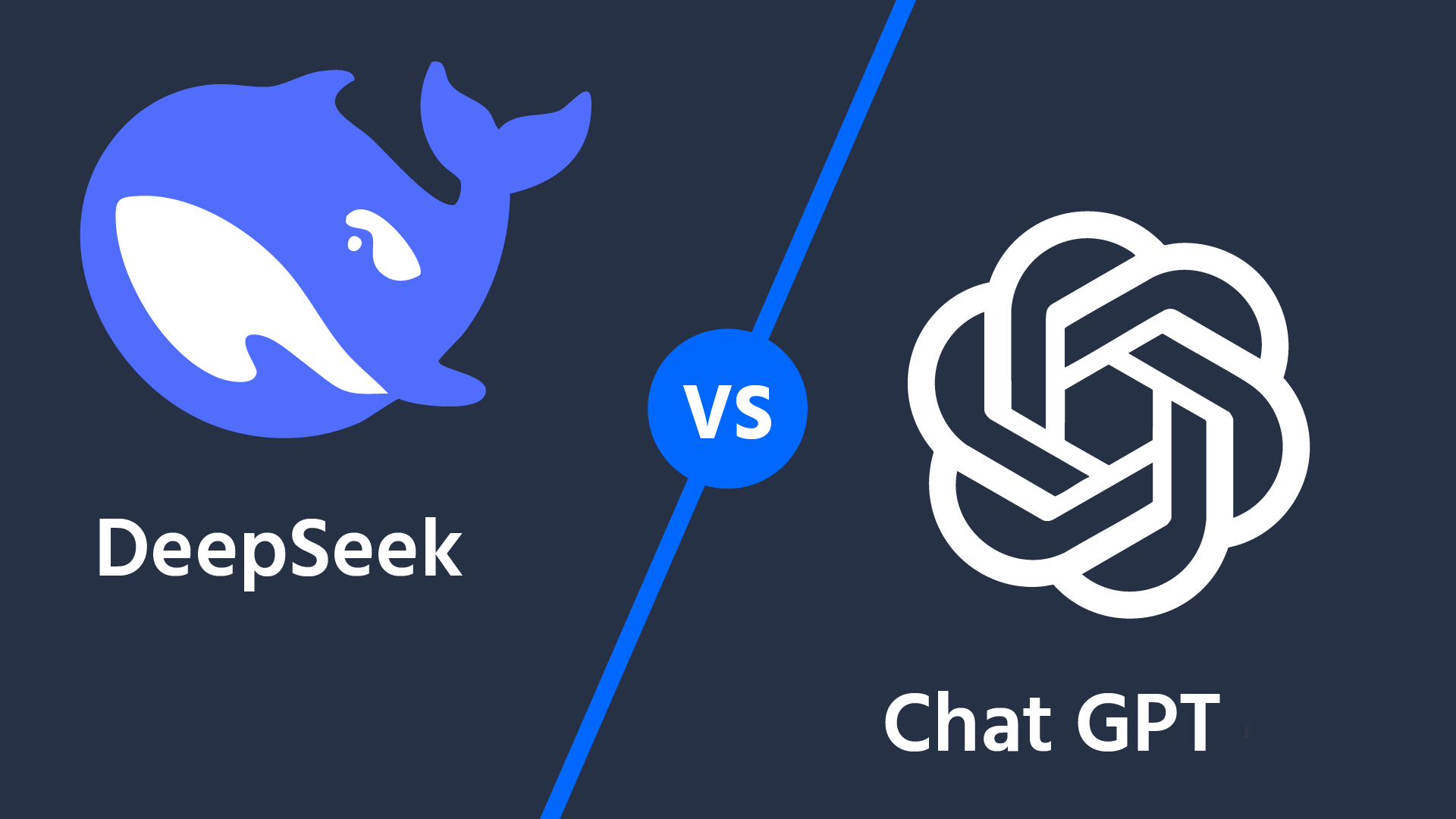
Introduction Chat GPT Vs Deep Seek
Chat GPT Vs Deep Seek: The evolution of artificial intelligence has led to remarkable advancements in text generation and search capabilities, making tools like Chat GPT and Deep Seek increasingly relevant in today’s digital landscape. As organizations continue to seek innovative solutions for enhancing customer interactions, streamlining content creation, and improving information retrieval processes, these AI-driven technologies have gained significant attention.
Chat GPT is a conversational agent powered by OpenAI’s GPT architecture, designed to generate human-like text based on input prompts. It excels in scenarios that require natural language understanding, enabling applications ranging from virtual customer support to creative writing. By effectively mimicking conversational patterns, Chat GPT has proven to be a valuable asset in various fields, such as education and marketing, where engagement and personalization are crucial.
In contrast, Deep Seek focuses on advanced search capabilities, utilizing AI algorithms to enhance the retrieval of relevant information from vast datasets. This tool is particularly beneficial for businesses that handle large volumes of data and require quick access to specific information. Deep Seek employs sophisticated indexing and querying techniques to deliver precise and timely results, making it a vital resource for professionals in sectors like research, analytics, and data management.
As we delve deeper into the comparison of Chat GPT vs Deep Seek, it is essential to understand how each facilitates their respective functions and the unique strengths they bring to the table. With the growing demand for AI solutions in diverse applications, exploring the nuances of these technologies will provide insights into their effectiveness and potential impact on the future of text generation and information retrieval.
Understanding Chat GPT
Chat GPT, developed by OpenAI, is a prominent artificial intelligence tool designed to understand and generate human-like text based on natural language processing (NLP) and machine learning techniques. By utilizing a transformer architecture, it enables advanced comprehension and manipulation of language, setting it apart from traditional AI systems. This technology is built upon vast datasets, allowing Chat GPT to learn patterns, structures, and nuances of human communication with striking accuracy.
The fundamental aim of Chat GPT is to facilitate meaningful conversations and interactions, thus broadening its applicability across numerous sectors. Its capabilities extend to generating coherent text, responding to inquiries, creating written content, and engaging users in dynamic dialogues. One distinguishing feature of Chat GPT is its ability to maintain context over conversations, which significantly enhances user experience and fosters natural interactions. Unlike simple chatbots that rely on pre-programmed responses, Chat GPT leverages its understanding of context and intent, leading to more relevant and insightful outputs.
Chat GPT’s versatility allows it to find utility in various industries, including education, healthcare, customer service, and content creation. Educational institutions utilize it to assist students with homework or generate engaging learning materials. In the healthcare sector, it can help provide preliminary information or support mental health initiatives. Customer service representatives benefit from implementing Chat GPT for instant responses and 24/7 support, enhancing overall service quality. Moreover, content creators employ Chat GPT to brainstorm ideas or draft articles, making it an invaluable tool in the digital content landscape.
In summary, Chat GPT represents a significant advancement in AI technology. Its reliance on sophisticated natural language processing and machine learning showcases its potential to revolutionize how machines interact with humans across various applications, emphasizing the need to consider its capabilities in comparison to other tools like Deep Seek.
Exploring Deep Seek
Deep Seek is a sophisticated information retrieval system that employs advanced deep learning algorithms to enhance search capabilities across various applications. Unlike Chat GPT, which primarily focuses on conversational AI and generating human-like text responses, Deep Seek specializes in contextual search optimization. This distinction positions Deep Seek uniquely in the realm of data retrieval, allowing it to deliver high-quality, contextually relevant results for users seeking specific information.
The technology behind Deep Seek revolves around the use of neural networks that can understand and process vast amounts of data quickly. As a result, it excels in identifying the intent behind user queries, thus ensuring that the outcomes are not merely based on keyword matching but rather on nuanced comprehension of context and relevance. Companies and individuals alike benefit from this capability, as they can retrieve information that is not only pertinent but also presented in a coherent manner that meets their specific needs.
Deep Seek’s applications extend beyond simple web searches; it is particularly advantageous for businesses that need to sift through extensive datasets to find meaningful insights. For instance, organizations can use Deep Seek to enhance their internal search engines, allowing employees to access documents, reports, and other resources efficiently. This is a distinct advantage compared to Chat GPT, which may generate plausible text responses but does not inherently retrieve or organize existing information.
Furthermore, Deep Seek’s optimization techniques can assist in improving user experience across platforms by adapting responses based on user behavior and preferences, making searches intuitive and user-friendly. In summary, while both chat GPT and Deep Seek leverage cutting-edge technology, their focuses are markedly different, with Deep Seek prioritizing contextual search and information retrieval, thus providing clear advantages for those in need of optimized search capabilities.
Comparison of Features
When evaluating the capabilities of artificial intelligence tools, it is essential to compare their core features. This comparison between Chat GPT and Deep Seek highlights critical aspects such as responsiveness, accuracy of responses, customization capabilities, integration with other systems, and user interface. Understanding these elements is vital for users deciding which tool might best suit their needs.
Chat GPT, developed by OpenAI, shines in its responsiveness. It utilizes advanced language models that allow for quick and coherent replies to user queries. This responsiveness is particularly beneficial in conversational settings where real-time interaction is necessary. On the other hand, Deep Seek, which focuses on information retrieval, emphasizes accuracy in its responses. Deep Seek’s algorithms are engineered to minimize errors, making it more reliable for obtaining factual data and specific knowledge.
Customization capabilities represent another distinction between the two tools. Chat GPT offers users the ability to fine-tune the chat experience through various parameters, enabling tailored interactions across diverse scenarios. Deep Seek, while lacking extensive customization features, excels at indexing vast amounts of data, which can be useful for users who prioritize comprehensive data analysis over personalized experiences.
Integration with different systems further sets these two tools apart. Chat GPT boasts APIs that allow for seamless integration into various applications, making it a versatile choice for developers looking to enhance user interaction. Deep Seek, conversely, is adept at data gathering and can be incorporated into research-oriented systems, providing a robust platform for fields that require deep dives into large datasets.
The user interface is another area of distinction. Chat GPT focuses on user-friendliness, providing an intuitive platform that appeals to a broad audience. In contrast, Deep Seek’s interface is designed with a focus on researchers and analysts, which may require a steeper learning curve but offers greater functionality for users familiar with data science.
Performance Analysis
In evaluating the performance of Chat GPT and Deep Seek, several key metrics must be considered, including response time, the quality of outputs, and user satisfaction rates. Both tools leverage sophisticated algorithms to process user inputs and generate responses, yet they vary significantly in their performance characteristics.
Response time is crucial for any interactive application, as users expect quick and efficient replies. Chat GPT typically showcases a swift response mechanism, often generating answers within seconds. In various tests, the average response time recorded for Chat GPT was approximately 1.5 seconds. In contrast, Deep Seek, while also efficient, has demonstrated varied response times that extend beyond the two-second mark depending on query complexity. This slight delay in response time could impact user experience, especially in high-demand scenarios where time is of the essence.
Quality of outputs is another critical factor in assessing the efficacy of these tools. Chat GPT is known for producing highly coherent and contextually relevant text, often mimicking human-like conversation effectively. Users have noted that it excels in generating creative and intricate responses, making it ideal for personal interaction and content creation. Conversely, Deep Seek is primarily designed for data retrieval and analytics, which may lead to more fact-based responses. Users often report that while the quality of information from Deep Seek can be impressive, its conversational efficacy may lag behind that of Chat GPT.
Lastly, user satisfaction rates are essential in understanding the two tools’ performance. Recent user surveys indicate that a higher percentage of users express satisfaction with Chat GPT’s capability to engage in multifaceted conversations. Meanwhile, Deep Seek users appreciate its strengths in data search and structured responses. Evaluating empirical evidence and user feedback is vital for understanding these tools’ performance in various applications. Each tool has its unique strengths, which cater to different user needs and preferences in the landscape of AI-driven communication.
Use Cases for Chat GPT
Chat GPT, a state-of-the-art language model developed by OpenAI, has found its way into various industries, demonstrating its versatility and effectiveness. One prominent use case is in customer support, where businesses utilize Chat GPT to interact with customers in real-time. By incorporating this AI-driven solution, companies can provide instant responses to frequently asked questions, resolving issues more efficiently and improving overall customer satisfaction. For example, e-commerce platforms have reported significant reductions in response times, leading to higher conversion rates and customer retention.
Beyond customer support, Chat GPT proves valuable in content creation. Marketing teams and content creators leverage this AI tool to generate blog posts, social media content, and product descriptions. Its ability to understand context and generate coherent text allows for the rapid creation of engaging material, which can lead to enhanced brand visibility and outreach. Numerous organizations have documented increased productivity levels by employing Chat GPT in their content workflows, enabling human writers to focus on more strategic tasks while routine writing is handled by AI.
In the realm of training and education, Chat GPT has become an essential resource. Educational institutions and corporate training programs use this AI to develop interactive learning materials and provide personalized tutoring. With its capability to adapt responses based on learner queries, Chat GPT fosters an engaging learning environment. Case studies show that students who interact with AI-led tutoring systems exhibit improved retention and comprehension, making the technology a valuable learning tool.
Lastly, many businesses implement Chat GPT as personal assistants to streamline daily operations. These AI assistants can manage schedules, send reminders, and facilitate communication within teams, thus optimizing productivity. The integration of Chat GPT across various sectors highlights its potential to revolutionize traditional workflows, proving beneficial for organizations seeking innovation. Through consistent utilization, organizations experience a transformation in how they approach tasks, showcasing the profound impact of Chat GPT in modern business environments.
Use Cases for Deep Seek
Deep Seek has emerged as a powerful tool for enhancing information retrieval across various sectors, proving particularly beneficial for organizations aiming to streamline their data access and improve user experiences. One major use case for Deep Seek can be found in its application within corporate environments, where employee productivity relies heavily on efficient data access. By implementing Deep Seek, organizations have reported significant improvements in their search functionality, enabling employees to locate relevant documents and information quickly. This can drastically reduce wasted time and resources, fostering a more efficient workplace.
Furthermore, Deep Seek’s capabilities extend beyond simple search functions. Organizations leverage it to perform data analysis, extracting meaningful insights from large datasets. For instance, companies in the finance sector utilize Deep Seek to analyze transaction data, enhance risk assessment, and identify potential fraud. This ability to sift through vast amounts of information, discerning patterns and anomalies, showcases how Deep Seek not only serves as a search tool but also as a vital resource for strategic decision-making.
In the realm of customer service, Deep Seek has revolutionized user experience on various platforms. By integrating Deep Seek into chatbots and customer support systems, organizations can provide instant answers to customer inquiries by querying extensive knowledge bases. This has proven essential for businesses aiming to enhance their customer engagement strategies while ensuring timely responses. A well-documented case study illustrates how an e-commerce company utilized Deep Seek for its customer service inquiries, resulting in a marked increase in customer satisfaction and retention rates.
Overall, the diverse use cases of Deep Seek in information retrieval reflect its significance in today’s data-driven landscape. Its applications not only improve search functionality but also facilitate insightful data analysis and enhanced user experiences across various sectors, positioning it as a vital asset in the competitive market of solutions like chat gpt vs deep seek.
Pros and Cons
When comparing Chat GPT vs Deep Seek, it is crucial to assess the strengths and weaknesses of each tool. Chat GPT, developed by OpenAI, excels in generating conversational and engaging content. Its ability to understand and produce human-like dialogue has made it popular for applications such as customer support, content creation, and interactive storytelling. Users appreciate the tool’s versatility, as it can converse on various topics, adapting its tone to match user input. Additionally, Chat GPT’s learning capability means that it continues to improve over time, enhancing its responses based on user interactions.
However, Chat GPT does have its limitations. One notable drawback is that it may sometimes produce content that lacks factual accuracy or depth. As it primarily generates text based on patterns in the data it was trained on, the information may not always reflect the most current or precise knowledge. Furthermore, there can be times when its responses are overly verbose or off-topic, which may frustrate users seeking concise and relevant answers.
On the other hand, Deep Seek shines in its search capabilities. This tool is designed to extract and organize information efficiently from large volumes of data, making it ideal for users who need comprehensive, data-driven insights. Deep Seek’s strengths lie in its ability to filter and rank information based on relevance, allowing users to find what they need quickly and effectively. This functionality is particularly advantageous for researchers, analysts, and anyone requiring in-depth data analysis.
Nevertheless, Deep Seek is not without its drawbacks. Its focus on data retrieval can lead to a more mechanical output that may lack the personalized touch that many users expect from conversational AI. Consequently, while Deep Seek is excellent for information extraction, it may not provide the engaging, interactive experience that Chat GPT offers. This comparison highlights the need for users to evaluate their specific requirements when deciding between Chat GPT vs Deep Seek.
Conclusion and Final Thoughts
As we have explored throughout this discussion on chat gpt vs deep seek, both tools have distinct strengths that can cater to various needs. Chat GPT, with its emphasis on human-like interaction and versatility in conversational contexts, proves highly effective for tasks requiring natural language understanding and generation. Conversely, Deep Seek excels in handling complex data searches and delivering precise, informative results, which may be more suited for specialized applications.
The ultimate decision between Chat GPT and Deep Seek thus hinges on the specific requirements of the user. For those involved in customer service, content creation, or personal assistance, Chat GPT may appear as the more appropriate choice, delivering seamless dialogues and potential for engaging user experiences. On the other hand, individuals or businesses that prioritize advanced data retrieval and analysis might find Deep Seek better aligned with their objectives. Its prowess in sifting through extensive datasets offers advantages for analytical tasks or research-oriented endeavors.
Furthermore, it is crucial for users to consider factors such as integration capabilities, learning curves, and overall accessibility of these tools. While Chat GPT can provide a more intuitive interface for casual users, Deep Seek may require a certain level of technical understanding to fully leverage its functionalities. As technology continues to evolve, it is also essential to stay updated on enhancements and new features within both platforms to ensure informed decision-making.
In conclusion, the choice between chat gpt vs deep seek is not merely about determining which is superior; rather, it is about identifying which tool can best serve one’s individual needs. By weighing the advantages and limitations of each, users can make educated choices that support their goals effectively.














